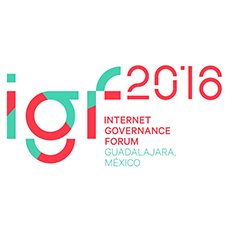The network of networked things: Finding the internet in IoT
6 Dec 2016 10:00h - 11:30h
Event report
[Read more session reports and live updates from the 11th Internet Governance Forum]
Mr Marco Hogewoning of RIPE NCC, the session’s co-moderator, began with a brief overview of the main points of the IoT discussion, introduced the panellists, and invited Ms Anya Ogorkiewicz of the Keryx Group to discuss their recent work.
Ogorkiewicz explained how her organisation has been given the task of implementing the IoT within the urban landscape. She also leads a think-tank looking at
- Public procurements of innovation
- The technology powering the IoT
- Local government opening up areas for innovation
In their view, it is difficult to find a workable blueprint for local government to implement.
Ms Grace Abuhamad of the US National Telecommunications & Information Administration (NTIA) indicated that the NTIA put out a Request for Comment (RFC) on the IoT. It is working on releasing a department paper in March 2017 and has an ongoing multistakeholder process on consumer IoT devices.
Co-moderator Mr Chris Buckridge, also from RIPE NCC, joined the discussion asking Abuhamad about the major themes emerging from the RFC. She identified consumer devices security and the availability of spectrum.
Mr Paul Wilson, Head of APNIC, started by saying that the IoT is not a new phenomenon, as various devices have been connected to the Internet over the years. He highlighted several security issues and referred to the previously defined IETF’s host requirements.
Mr Oleg Logvinov, Chair of the IEEE P2413 working group, commented on the over 200 IoT definitions and emphasised the need for semantic interoperability among more than just devices. He indicated a forthcoming press release on recent collaboration between the IEEE and various other organisations and called for practical collaboration to ensure standards can be widely adopted.
Ms Dominique Lazanski, GSMA, reviewed various impressions of the IoT and interoperability and called for a communication framework. She highlighted the challenge where some governments require pre-definitions for technical standards. Lazanski described the GSMA’s Connected Living Program that has been adopted by some of their members.
Ms Corinne Cath, a human rights researcher, called for a focus on privacy and security before discussing human rights in standards. She reviewed the Internet interconnection and how carriers manufacture and repair connectivity while encouraging certification and standardisation.
Hogewoning raised interoperability again, noting as an example that Microsoft lightbulbs are compatible with Apple software running inside the homes.
Logvinov advocated for consideration of the unique gestures that we individually use on our smart phones to be considered like a digital fingerprint.
Questions and comments followed.
One participant asked how IoT rules of regulation would be enforced in each country. Ogorkiewicz answered describing a case where an IoT system that was focused on aiding visually and otherwise impaired individuals. She highlighted that it was easy for local authorities to implement the guidelines but they found it challenging to source equivalent technical standards.
Another commented that the IoT would be a difficult thing to address because of the outstanding improvements required, for example the transition from IPv4 to IPv6. More information here.
A third participant pushed for us not to miss the opportunity to reflect before implementing technical solutions so that the solutions could be placed in the right context.
The question of incentivising new IoT actors to become full members of the Internet community was raised. Wilson responded by pointing to Geoff Houston’s blog post on the Internet of Stupid Things. He mentioned that large and small manufacturers can make significant mistakes and used Samsung’s recent battery issues as an example.
The last few minutes of the session were spent discussing manufacturers and vendors’ response to fears in the market, comparing IoT issues with the development of the automotive industry and the requirement for safer vehicles through social as well as regulatory pressures. Each presenter highlighted the need for collaboration and full use of the multistakeholder model for the IoT to advance.
by Andre Edwards, Internet Society Trinidad and Tobago
Related event

